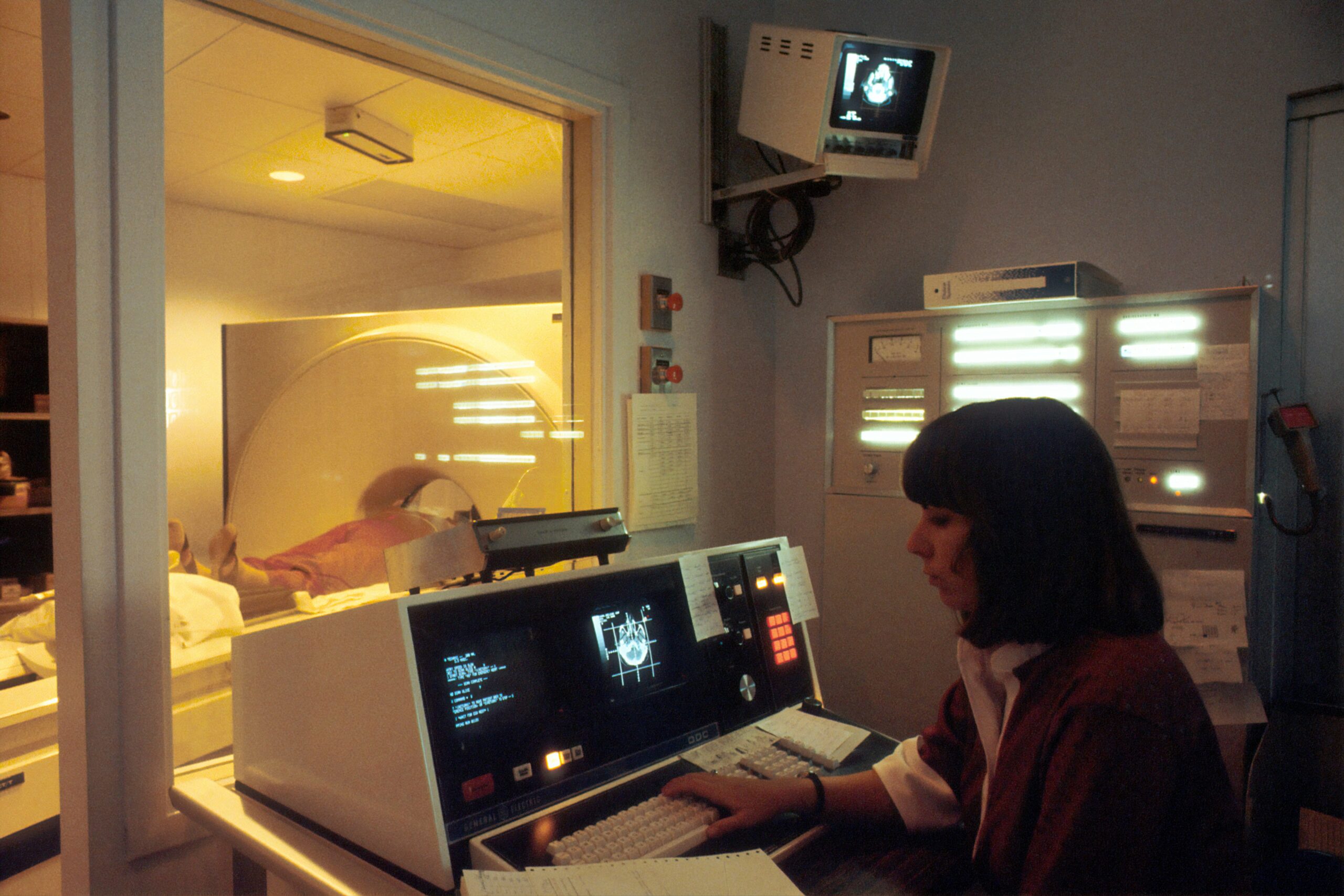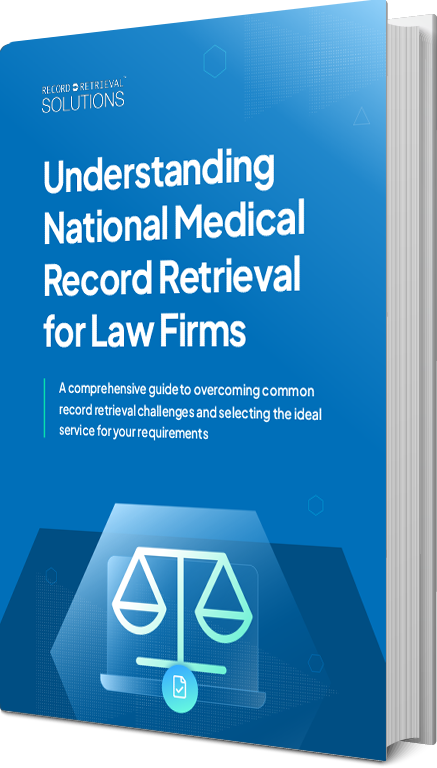Key Takeaways
- Digital Imaging and Communications in Medicine (DICOM) is the universal standard for storing and sharing medical imaging data.
- It connects imaging devices like MRIs and CT scanners with healthcare systems for seamless data exchange.
- For law firms, insurers, and life sciences organizations, decoding DICOM files is critical to reviewing imaging data efficiently and accurately.
- Record Retrieval Solutions (RRS) simplifies the process by delivering DICOM images in court-ready, viewable formats, eliminating compatibility headaches and delays.
Who Uses DICOM and Why Does It Matter?
DICOM is everywhere in modern healthcare, but for legal, insurance, and research professionals, it’s often an unexpected roadblock.
Radiologists, hospitals, and clinics rely on DICOM to store diagnostic images such as X-rays, MRIs, and ultrasounds. Each file combines the image data and the patient’s identifying information, making it a complete medical imaging record.
However, when a law firm or claims team requests those records, they often receive DICOM files that can’t be opened using regular software. This leads to:
- Delayed case reviews due to inaccessible image data
- Time wasted finding DICOM viewers or converting files
- Risk of losing key visual evidence in litigation or claims
That’s where RRS bridges the gap. We handle not just the record retrieval but also format conversion, labeling, and packaging so your team receives imaging files in a usable format, ready for legal, insurance, or clinical review.
What Exactly Is a DICOM File Format?
DICOM is a universal standard developed in the 1980s by the National Electrical Manufacturers Association (NEMA) to ensure interoperability among medical imaging systems.
How DICOM Works
Each DICOM file contains:
- Image Data – the actual scan (X-ray, MRI, CT, etc.)
- Header Information – patient name, exam type, equipment used, and date
- Metadata – technical details that ensure the image displays correctly
This standardized structure allows hospitals and clinics to share and interpret imaging data across different systems and vendors.
But while DICOM streamlines data sharing within healthcare, it often creates friction outside it, especially in legal or insurance workflows, where compatibility, privacy, and portability are top concerns.
RRS Simplifies the Complexity
At Record Retrieval Solutions, we extract, decrypt, and deliver DICOM images as is or in the following formats:
- Standardized viewable files (JPEG, PDF, or MP4 sequences)
- Fully indexed and labeled imaging reports
- Optional certified copies for court submission
This helps law firms and insurers skip the technical barriers — reviewing evidence faster, with zero data loss.
When Do DICOM Files Become Critical for Case Management?
DICOM images play a crucial role across multiple industries:
- Personal Injury and Malpractice Cases: Imaging records prove injury extent, surgical outcomes, or diagnostic errors.
- Insurance Claims: Adjusters verify treatment necessity and timelines.
- Life Sciences & Clinical Research Organizations (CROs): Imaging data supports endpoint validation and adverse event review.
- Surrogacy and Fertility Clinics: Ultrasound data is often retrieved and stored as DICOM for monitoring progress.
In each scenario, timeliness and readability of the image data directly impact outcomes — whether it’s a settlement timeline, research deadline, or regulatory audit.
RRS accelerates this process by:
- Retrieving DICOM files directly from providers
- Converting and organizing them within 15 days on average
- Delivering HIPAA-compliant, searchable packages via the RecordSync portal
The result? Faster insights and stronger evidence — without burdening your internal teams with technical file management.
DICOM Challenges and How We Help You
Common DICOM Challenges | How RRS Solves It |
Files can’t open without special software | We convert DICOMs into accessible formats (JPEG/PDF). |
Multiple discs or encrypted downloads | We consolidate and decrypt files securely in RecordSync. |
Missing or mismatched metadata | Our quality team audits each record for completeness. |
Provider delays or inconsistent labeling | We standardize filenames and organize by patient/date. |
These pain points aren’t minor — they can stall litigation timelines, delay claims, or disrupt research milestones. RRS’s end-to-end imaging retrieval eliminates those inefficiencies, ensuring every DICOM file is complete, compliant, and usable.
How Efficient DICOM Management Saves Time and Money
When imaging files are disorganized or unreadable, costs add up fast:
- Internal hours wasted: the average paralegal spends 2–3 hours per case, troubleshooting imaging files
- Lost productivity: delayed expert reviews extend case cycles
- Re-requests: duplicate provider follow-ups increase fees and turnaround time
RRS clients save an average of 60% on retrieval-related labor and up to 15 days in turnaround time — not because we move faster alone, but because we deliver imaging data that’s instantly usable.
That’s the actual ROI: fewer bottlenecks, faster decisions, and more cases closed on schedule.
The Future of DICOM in Medical Record Retrieval
As healthcare digitization accelerates, DICOM remains the imaging backbone — but interoperability with legal, insurance, and research platforms still lags.
That’s why RRS is expanding platform integrations, including Filevine compatibility and data visualization options, to make DICOM data review effortless and secure.
The goal isn’t just to deliver records — it’s to provide clarity, so clients spend less time managing files and more time moving cases forward.
Conclusion
Understanding DICOM isn’t just a technical exercise — it’s a business advantage. For attorneys, adjusters, and clinical teams, DICOM images represent critical evidence that must be retrieved, viewed, and shared quickly without data loss or confusion.
With Record Retrieval Solutions, you get more than access — you get clarity, consistency, and compliance in every imaging request.
From HIPAA-secure transfers to ready-to-review DICOM conversions, RRS ensures your team can focus on outcomes, not file types.
Book a demo to see how RRS transforms DICOM retrieval into streamlined, court-ready efficiency.
FAQs
Is DICOM HIPAA compliant?
Yes. The DICOM standard supports patient confidentiality, but handling and transmission must follow HIPAA protocols. RRS ensures all retrievals meet HIPAA compliance standards.
How long does it take to retrieve DICOM images?
Most providers take 2–4 weeks on average, but RRS averages 15 days, including retrieval, conversion, and delivery.
Can DICOM files be used in legal or insurance cases?
Absolutely. DICOM images are often vital in litigation, insurance claims, and clinical research. RRS delivers them in formats accepted by courts and regulatory bodies.






